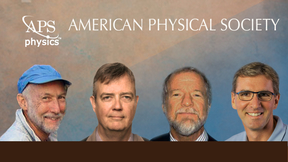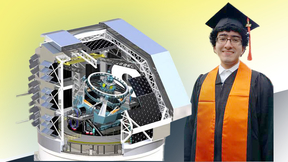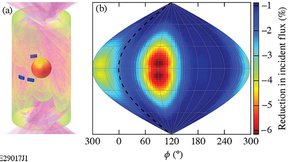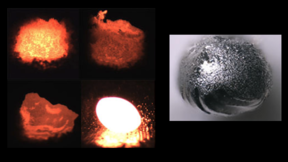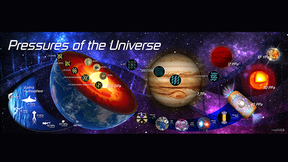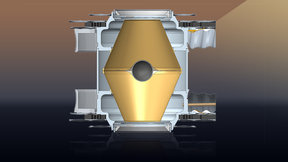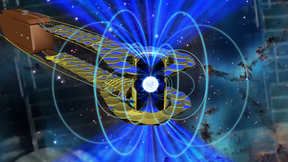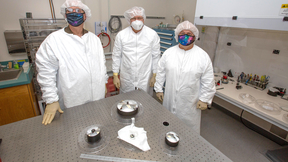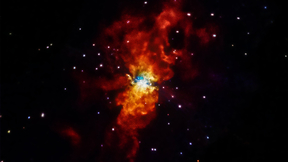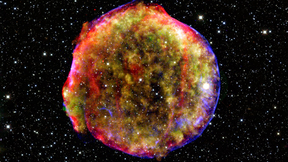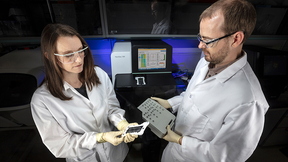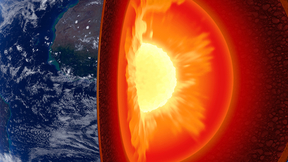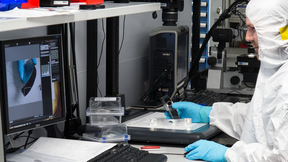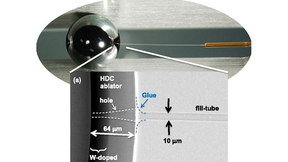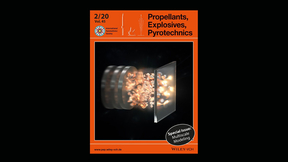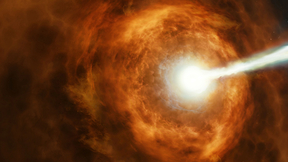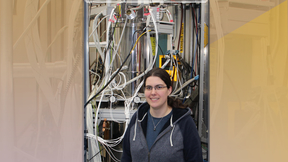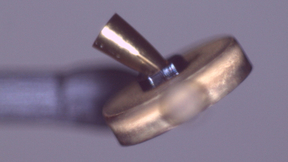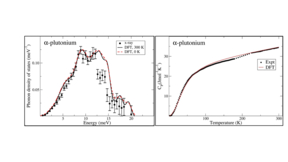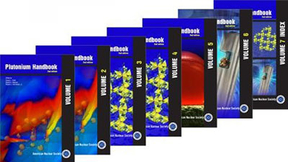Back
Physics
Four LLNL scientists honored as APS fellows
Four Lawrence Livermore National Laboratory (LLNL) scientists have been selected as 2020 fellows of the American Physical Society (APS). The new fellows represent a selection of physics expertise, ranging from laser plasma physics to magnetic fusion plasmas, to theoretical and computational understanding of plasma interactions and soft X-ray and free electron laser…
Inspiring future physicist while exploring dark energy
Doctoral student Victor Baules is spending his summer exploring the connection between dark energy and the expansion of our universe, but due to the pandemic, his research fellowship is more down-to-earth, taking place from his home in Alabama. Baules’ research trajectory in high-energy theory aligns with astrophysics research at Lawrence Livermore National Laboratory …
ICF implosions have significant 3D asymmetries
Data correlating two factors that lead to implosion asymmetries have brought Lawrence Livermore National Laboratory (LLNL) scientists a step closer to understanding the gap between simulations and performance of inertial confinement fusion (ICF) experiments at the National Ignition Facility (NIF). These experiments aim to ignite a propagating fusion burn wave in deuterium…
Formation of high-purity uranium via laser-induced thermal decomposition
Producing gram quantities of uranium metal in a controlled manner by traditional methods is challenging due to the complex chemistry of precursor material and extreme thermal requirements. In a recent study, LLNL researchers demonstrated a novel approach that combines modeling and an advanced experimental technique for extracting uranium from a uranium-containing compound…
LLNL joins new research on atom-changing pressures
High energy density (HED) scientists at Lawrence Livermore National Laboratory (LLNL) have helped launch a new National Science Foundation (NSF) effort to understand the physical and astrophysical properties of matter under pressures strong enough to change the structure of individual atoms. The Center for Matter at Atomic Pressures (CMAP) is hosted by the University of…
Scientists encouraged by Frustraum experiments at NIF
Initial NIF experiments using a full-scale version of the Frustraum hohlraum have produced nearly round inertial confinement fusion (ICF) implosions and more laser-induced energy absorption by the fuel-filled capsule. National Ignition Facility (NIF) researchers are optimistic that results from the initial tests of the novel angular-shaped hohlraum could create more…
Record EOS measurement pressures shed light on stellar evolution
Using the power of the National Ignition Facility (NIF), the world’s highest-energy laser system, researchers at Lawrence Livermore National Laboratory (LLNL) and an international team of collaborators have developed an experimental capability for measuring the basic properties of matter, such as the equation of state (EOS), at the highest pressures thus far achieved in a…
Lawrence Livermore, Tyvak Systems announce agreement to develop telescopes for nanosatellites
Lawrence Livermore National Laboratory (LLNL) and Tyvak Nano-Satellite Systems Inc. have reached a cooperative research and development agreement (CRADA) to develop innovative compact and robust telescopes for nanosatellites. The four-year, $2 million CRADA will combine LLNL’s Monolithic Telescope (MonoTele) technology with Tyvak’s expertise producing high-reliability…
Experiments expose how powerful magnetic fields are generated in the aftermath of supernovae
In a paper recently published by Physical Review Letters, a team of researchers including scientists from Lawrence Livermore National Laboratory (LLNL) detail the first quantitative measurements of the magnetic field structure of plasma filamentation driven by the Weibel instability, using a novel optical Thompson scattering technique. These experiments study the processes…
Shock waves created at NIF mimic astrophysical particle accelerators powered by exploding stars
When stars explode as supernovae, they produce shock waves so powerful they can blast streams of particles called cosmic rays into the universe at nearly the speed of light. Yet the exact mechanisms behind these phenomena remained mysteries for decades. Now, in experiments at the National Ignition Facility (NIF), an international team of scientists from institutions…
Multi-lab research to improve COVID-19 diagnostics
In response to the ongoing need for COVID-19 testing, Lawrence Livermore National Laboratory (LLNL) biologists are part of a collaborative research effort focused on improving the speed and accuracy of diagnostic tests, while enhancing the ability to adapt diagnostic tools as the virus evolves. Currently, the fastest way to identify known pathogens is by using a DNA-based…
Checking out iron under pressure
Iron is the most stable and heaviest chemical element produced by nucleosynthesis in stars, making it the most abundant heavy element in the universe and in the interiors of Earth and other rocky planets. To get a better understanding of the high-pressure behavior of iron, a Lawrence Livermore National Laboratory (LLNL) physicist and international collaborators discovered…
NIF’s TARDIS Featured in Review of Scientific Instruments
A paper describing the design and performance of a workhorse NIF experimental platform known as TARDIS was a featured article in a recent edition of the journal Review of Scientific Instruments.
Angled Fill-Tubes Aid Quest to Raise NIF’s Implosion Performance
The tiny fill-tube used to inject NIF’s high-density carbon capsules with cryogenic fuel is also known to reduce the performance of implosions, and LLNL researchers are exploring several methods that could diminish these negative effects.
Special journal issue highlights the work of LLNL energetic materials researchers
A special issue of the journal Propellants, Explosives, Pyrotechnics was recently released that highlights multiscale modeling and experiments, an area of energetic materials science and technology in which LLNL researchers have played a leading role for some time. The issue features the work of MSD’s Keo Springer, Will Bassett, Sorin Bastea, Svjetlana Stekovic,…
ARC results provide a ‘pleasant surprise’
When scientists saw the results from the first-ever Discovery Science experiment on the National Ignition Facility’s (NIF) Advanced Radiographic Capability (ARC) laser, they were genuinely surprised: The experiment produced much higher energy electrons than predicted based on the laser energy and power used on these shots. Those results, which were not typical of new…
Lab physicist awarded 2020 dissertation prize
Lawrence Livermore National Laboratory (LLNL) physicist Natalie Hell has been awarded the 2020 Dissertation Prize from the Laboratory Astrophysics Division (LAD) of the American Astronomical Society (AAS). Hell received the prize for her outstanding experimental doctoral dissertation in laboratory astrophysics. Her thesis, “Benchmarking Transition Energies and Emission…
Focusing target gives powerful boost to NIF’s ARC
Lawrence Livermore National Laboratory (LLNL) scientists have employed compound parabolic targets to achieve relativistic effects associated with significantly greater laser intensities. This innovation has substantially expanded the experimental capabilities of the National Ignition Facility’s (NIF) Advanced Radiographic Capability (ARC) laser. The targets, called…
Important plutonium property calculated for the first time
Lattice vibrations (phonons) are important for all equation-of-state modeling. A recent paper by PLS researchers Per Söderlind and Lin Yang (both PHYS) describes results from the first-ever calculation of α-plutonium phonon density of states. The first-principles model agrees very well with the results of x-ray scattering experiments. Further, the calculated specific heat…
Livermore researchers contribute to major plutonium publication
This fall, the American Nuclear Society is publishing the second edition of the Plutonium Handbook, a 4000-page, 7-volume compendium that delivers a comprehensive review of plutonium chemistry. (The first edition was published 50 years ago.) Five years in the making, this publication includes contributions from 17 Lawrence Livermore researchers, two of whom are also on the…


